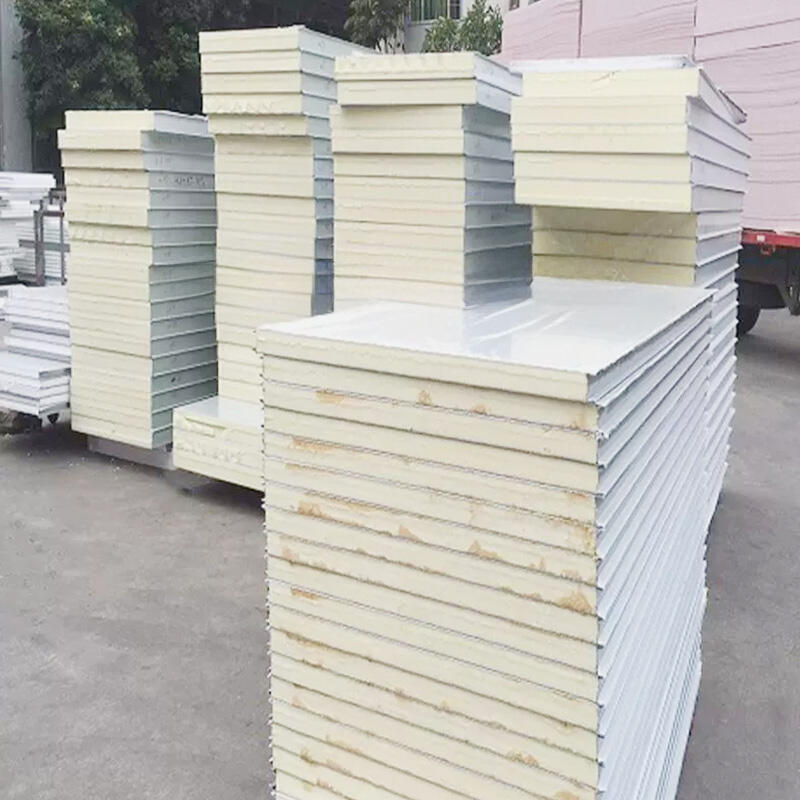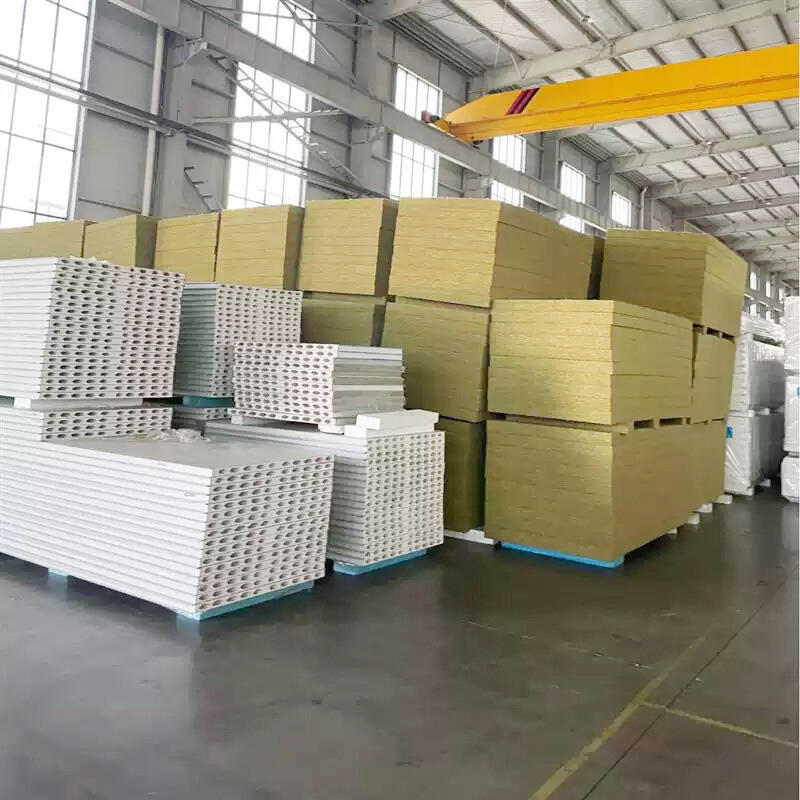Understanding Modern Building Solutions: The Power of Sandwich Panels
In today's construction industry, innovative building materials have revolutionized how we approach structural projects. Among these advancements, sandwich panels have emerged as a versatile and efficient solution that combines strength, insulation, and cost-effectiveness. These composite materials consist of two facing layers bonded to a lightweight core, creating a robust building component that's transforming both commercial and residential construction.
The growing demand for energy-efficient and sustainable building materials has positioned sandwich panels at the forefront of modern construction. Whether you're planning a warehouse, cold storage facility, or residential project, selecting the right sandwich panel can significantly impact your building's performance, longevity, and overall cost-effectiveness.
Core Components and Material Composition
External Facing Materials
The outer layers of sandwich panels play a crucial role in determining their durability and aesthetic appeal. Steel facings remain the most common choice, offering excellent strength and weather resistance. These steel sheets typically feature protective coatings like galvanization or paint systems to enhance corrosion resistance. Aluminum facings present a lighter alternative, ideal for projects where weight is a concern, while composite materials offer unique architectural possibilities.
Insulation Core Options
The core material largely determines the panel's insulative properties and structural integrity. Polyurethane (PUR) and polyisocyanurate (PIR) cores dominate the market, providing superior thermal resistance and fire performance. Mineral wool cores offer enhanced fire resistance and acoustic properties, making them particularly suitable for buildings with stringent safety requirements. Expanded polystyrene (EPS) presents a cost-effective option for less demanding applications.
Performance Characteristics and Selection Criteria
Thermal Efficiency Standards
When selecting a sandwich panel, thermal performance stands as a primary consideration. The insulation core's thickness and material type directly influence the U-value, which measures heat transfer through the panel. Modern sandwich panels can achieve U-values as low as 0.15 W/m²K, significantly reducing heating and cooling costs. Climate conditions and local building regulations should guide your thermal efficiency requirements.
Structural Load Capacity
The panel's ability to withstand loads without deformation is crucial for structural integrity. Consider both dead loads (the panel's weight) and live loads (wind, snow, and maintenance access). The span capability between supports affects the overall building design and cost. Higher-density cores and thicker facing materials generally provide greater load-bearing capacity.

Fire Safety Requirements
Fire resistance ratings vary significantly among different sandwich panel types. PIR and mineral wool cores offer superior fire performance, with some panels achieving up to 120 minutes of fire resistance. Always verify that your chosen panel meets local fire safety regulations and insurance requirements, particularly for industrial and commercial applications.
Installation and Long-term Considerations
Mounting Systems and Installation Methods
The efficiency of sandwich panel installation depends heavily on the chosen fixing system. Hidden fixing methods offer superior aesthetics and weather protection but may cost more than exposed fixings. Consider the panel's joint design, which affects both installation speed and weathertightness. Modern panels often feature sophisticated tongue-and-groove connections that enhance thermal performance and reduce air leakage.
Maintenance Requirements
While sandwich panels generally require minimal maintenance, regular inspections can prevent potential issues. Check for damage to surface coatings, joint sealants, and fixing points. Most panels can be cleaned with standard methods, but avoid harsh chemicals that might damage protective coatings. The chosen facing material significantly influences maintenance needs and cleaning frequency.
Cost Analysis and Return on Investment
Initial Investment Considerations
The upfront cost of sandwich panels varies based on material quality, core thickness, and facing specifications. While premium panels may command higher initial prices, they often deliver superior long-term value through enhanced durability and performance. Factor in installation costs, which can vary significantly depending on panel complexity and site conditions.
Long-term Economic Benefits
Consider the total lifecycle cost when evaluating sandwich panels. Superior thermal performance can significantly reduce energy costs over the building's lifetime. Durability and low maintenance requirements minimize ongoing expenses. Additionally, the speed of installation can reduce labor costs and allow earlier building occupancy, improving project economics.
Environmental Impact and Sustainability
Carbon Footprint Analysis
Modern sandwich panels increasingly incorporate sustainable materials and manufacturing processes. Many manufacturers now offer panels with recycled content in both facings and cores. The excellent thermal performance reduces operational energy consumption, contributing to lower carbon emissions throughout the building's lifecycle. Consider panels with environmental product declarations (EPDs) for transparent sustainability assessment.
End-of-Life Considerations
The recyclability of sandwich panels varies by material composition. Steel facings are widely recyclable, while some insulation cores present recycling challenges. Some manufacturers offer take-back programs for end-of-life panels. Consider designs that facilitate future disassembly and material recovery when planning long-term sustainability strategies.
Frequently Asked Questions
What is the typical lifespan of a sandwich panel?
High-quality sandwich panels typically last 25-30 years when properly installed and maintained. However, actual longevity depends on environmental conditions, usage patterns, and maintenance practices. Some premium panels can exceed 40 years of service life in favorable conditions.
Can sandwich panels be modified or cut on-site?
While sandwich panels can be cut on-site, it requires specialized tools and expertise to maintain edge integrity and prevent delamination. Factory-cut panels are preferred whenever possible, as they ensure optimal performance and warranty compliance.
How do sandwich panels compare to traditional construction methods?
Sandwich panels offer several advantages over traditional construction, including faster installation, better thermal performance, and reduced structural load. While initial costs may be higher, the total project cost often proves lower due to reduced labor, faster completion times, and improved energy efficiency.
Table of Contents
- Understanding Modern Building Solutions: The Power of Sandwich Panels
- Core Components and Material Composition
- Performance Characteristics and Selection Criteria
- Installation and Long-term Considerations
- Cost Analysis and Return on Investment
- Environmental Impact and Sustainability
- Frequently Asked Questions


